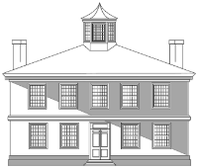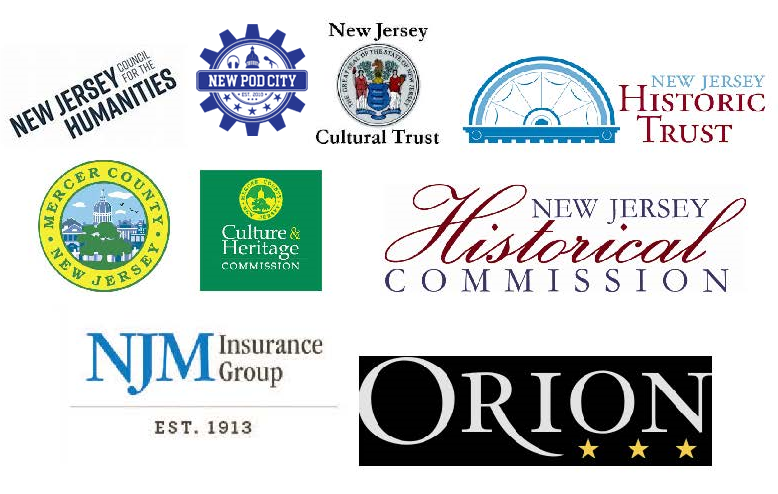Mission Statement
To share the authentic history of the house, property, and people with our communities, connecting the past with today and tomorrow
Vision Statement
Pursuing truths to impact the future
What This Means To Us
Telling stories of the PROPERTY.
The land on which the William Trent House stands was territory that was home to Indigenous peoples for thousands of years before European colonization. Early colonists, Mahlon Stacy and later William Trent, established settlements at the ‘Falls of the Delaware.’ “Trent’s Town” – Trenton – became a major industrial city with many factories and working class neighborhoods, including those surrounding the William Trent House.
Today we are exploring the changing social and physical landscape surrounding the Trent House and consequences of government
and business actions from redlining in the 1930s to urban renewal in the 1960s on the Trent House neighborhood.
Telling stories of the HOUSE.
Both beautiful and imposing, Trent’s 1719 cupola-topped house is one of the best existing examples of early Georgian architecture
in the Mid-Atlantic region. Over the centuries, many additions culminated in an elaborate Gilded Age mansion.
Gifted to the City of Trenton by the Stokes family in 1929, the house was then restored to its colonial appearance.
The house is now furnished according to a 1726 inventory of Trent’s estate after his death.
Today we are Illustrating how life was experienced by all the residents of the house during the 1700s - by wealthy merchant William Trent,
his second wife Mary Coddington, their young son William, and the enslaved people who lived on Trent's plantation -
Yaff, Joan, Bob, Dick, Nanny, Tom, Julius, Bossin, Harry, Pedro, and Cupid.
Telling stories of the PEOPLE:
Inhabitants of the historic house and land comprising Trent’s 1,000 acre estate include
Indigenous people, European colonists, people of African descent both enslaved and free,
Revolutionary War figures, New Jersey elected and business leaders, immigrants working in local factories,
people relocating from southern and rural U.S. communities, and recent newcomers from Central America and across the globe.
Today we are describing how the cultures of three peoples – Indigenous, European, and African – influenced each other in colonial New Jersey
and researching the experiences of European immigrants and migrants from the American south who came to Trenton in the 19th and 20th centuries.
The land on which the William Trent House stands was territory that was home to Indigenous peoples for thousands of years before European colonization. Early colonists, Mahlon Stacy and later William Trent, established settlements at the ‘Falls of the Delaware.’ “Trent’s Town” – Trenton – became a major industrial city with many factories and working class neighborhoods, including those surrounding the William Trent House.
Today we are exploring the changing social and physical landscape surrounding the Trent House and consequences of government
and business actions from redlining in the 1930s to urban renewal in the 1960s on the Trent House neighborhood.
Telling stories of the HOUSE.
Both beautiful and imposing, Trent’s 1719 cupola-topped house is one of the best existing examples of early Georgian architecture
in the Mid-Atlantic region. Over the centuries, many additions culminated in an elaborate Gilded Age mansion.
Gifted to the City of Trenton by the Stokes family in 1929, the house was then restored to its colonial appearance.
The house is now furnished according to a 1726 inventory of Trent’s estate after his death.
Today we are Illustrating how life was experienced by all the residents of the house during the 1700s - by wealthy merchant William Trent,
his second wife Mary Coddington, their young son William, and the enslaved people who lived on Trent's plantation -
Yaff, Joan, Bob, Dick, Nanny, Tom, Julius, Bossin, Harry, Pedro, and Cupid.
Telling stories of the PEOPLE:
Inhabitants of the historic house and land comprising Trent’s 1,000 acre estate include
Indigenous people, European colonists, people of African descent both enslaved and free,
Revolutionary War figures, New Jersey elected and business leaders, immigrants working in local factories,
people relocating from southern and rural U.S. communities, and recent newcomers from Central America and across the globe.
Today we are describing how the cultures of three peoples – Indigenous, European, and African – influenced each other in colonial New Jersey
and researching the experiences of European immigrants and migrants from the American south who came to Trenton in the 19th and 20th centuries.









